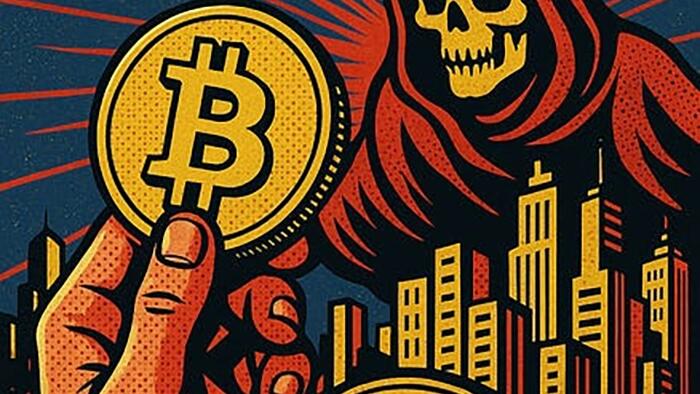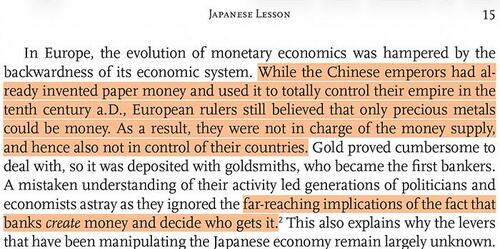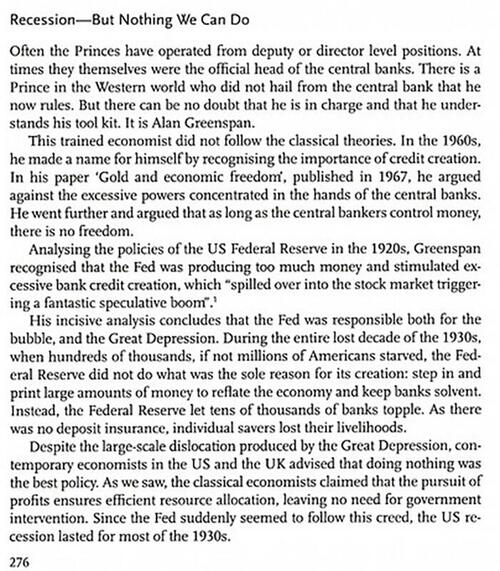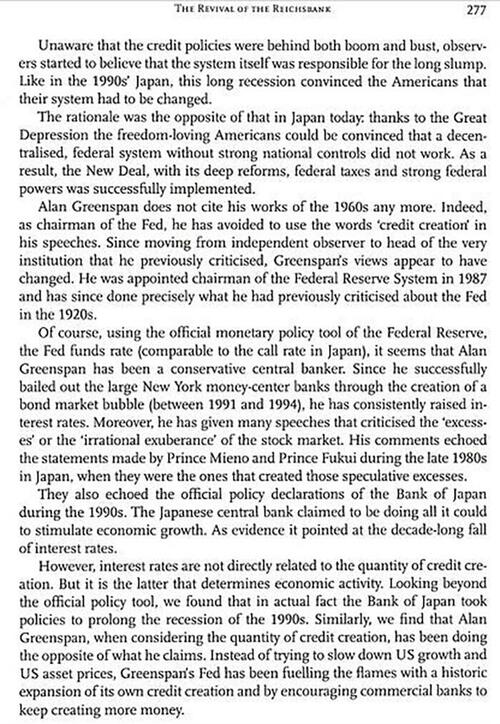


Authored by Kane McGukin via BombThrower,com,
TL;DR: The Core vs Knots battle is an attack on the Bitcoin network. A monetary struggle no different than the fight to establish the Federal Reserve in 1913.
The 1900s, like today, began with bankers at war over the governing rules of money. Two competing factions, the Aldrich Plan and Glass-Owen Plan, launched an assault on sound money because men sought more power and nations demanded more control.
Gold, like Bitcoin, is money because of its first principle origins. Yet the misconception, then and now, is that survival requires more complexity.
History shows how fragile conviction can be. An offer for a seat at the table is enough to flip once passionate defenders of sound money to enablers of credit and unlimited debt. Original goldbugs like Keynes in the 1920s and Greenspan in the 1980s proved unable to brush off the emotional pull of notoriety, currency, and control. Each flippening reintroduces inflationary tactics that corrode money’s principles and value.
Cunning design and corrupt schemes have often proven far too great for man to overcome.
There’s never a dull moment in Bitcoin or in the world of finance, for that matter.
The latest continuous divide within the Bitcoin community may look like another technical battle. But does it point to something deeper? While it feels like there’s a never-ending need to have something technical to argue over, beneath the GitHub commits and mailing list debates lurks a ghost from the past. The ideological struggle that gave birth to America’s Federal Reserve.
The Fed’s creation was framed in the language of decentralization and regional representation.
Yet its foundation was built on two forces: filters and control (here and here). Behind the curtain, the true drivers in 1913 were the same as they are today. A desire for power, profit, and the ability to manufacture credit money from a hard money basis. A Paper Bitcoin Summer, if you will.
Source: The Princes of Yen by Richard Werner
Ask any Bitcoin maximalist what they despise most, and the likely answers are: the Federal Reserve or the dollar’s undeniable debasement.
That’s what makes the current Core vs. Knots clash so fascinating. It’s not just a nerdy civil war inside Bitcoin development. Viewed through the lens of monetary history, the parallels come into focus. A reminder that only a little over 100 years ago, lines were drawn and sides were picked between two competing visions for a new financial system: the Aldrich Plan (big-bank, corporate centralization) and the Glass-Owen Plan (populist, individualistic ideology). With full hindsight, both promoted decentralization in name only.
Both claimed to defend the money with one important caveat, both plans led inevitably to the centralization of gold, the original “sound money”.
By expanding the Op_Return size (protocol inflation), are we not reintroducing the debasement Satoshi rooted out?
By offering a more centralized Bitcoin client, are we not centralizing trust?
Are both options not heading down a similar “Federal Reserve” path?
Regardless of side, the question we should be asking: will Bitcoin, too, cloak centralization in the language of decentralization?
As we saw in 1913, a similar banking stalemate led to the Federal Reserve Act being pushed through on the eve of Christmas holiday. Plowing forward at all costs was not the right answer. History reminds us that just because you can, doesn’t mean you should.
Heated debates tend to harden into an us vs. them mentality, where momentum overrides principle. More often than not, the final path hasn’t resolved the gripes but has paved the way for political and centralized control of money.
“Smart cows show the other cows how to bypass the filters. You know, like you can open the gate. So, you know, it’s always been the case. You could always bypass these things, but I don’t think we would agree that we should bypass the dust relay fee and start seeing a massive amount of dust clog up the network.” – Samson Mow
In the world of banking, there have always been cops and robbers. Piles of assets and monetary value have always enticed the idea of a bank heist. Bitcoin and digital money are proving to be no different. The storage source has shifted, but the mentality to capture remains the same. It’s a reminder of how you embed a European Central Bank Plan inside of an American financial system. Divide and conquer.
If you look at ordinals, that’s one. They’re it’s kind of like an ICO but with pictures. You know, they’re selling these these PFPs or whatever wizard images and cat images and then they have a war chest and they don’t care. They can print more stuff. – Samson Mow
Whether it’s printing from the FED, ICOs, DATs, or Bitcoin Treasury Companies, the invisible hand is one of fractional reserve banking policies.
Furthermore, what Samson describes with ordinals and fee compression rhymes with history. Changing the cost to process a transaction to $0.01 sat/vbytes allows unintended consequences at some point. Just as “cheap trading” fueled reckless high-frequency speculation in equities around 2008. Cheap blockspace and zero-fee incentives risk repeating the same cycle and diluting the value of Bitcoin’s network.
Lowering friction may look like innovation, but history shows it usually ends in centralization and systemic fragility.
Low fees, in essence, remove the security of a financial moat.
At the height of the 1914 crisis, John Maynard Keynes was asked to brief the Chancellor of the Exchequer on whether the pound should remain tied to gold. Keynes argued emphatically that it must:
… he (Keynes) had come down very strongly in favor of maintaining the link: “London’s position as a monetary center depends very directly on complete confidence in London’s unwavering readiness” to meet its obligations in gold and would be severely damaged if “at the first sign of emergency that commitment was suspended.
… But whereas before the war he had thought that the best way to achieve this was to ensure that currencies such as the pound be fully convertible to gold at a fixed value, he had now come to believe that there was no reason why linking money supply and credit to gold should necessarily result in stable prices. – Lords of Finance
If the examples of John Maynard Keynes and Alan Greenspan, along with the parallel of 1913 versus today’s Bitcoin divide, reveal nothing else, it is that inflationary pressures, though often hidden, are always present. The history of currency is a long dotted line of individuals who ultimately bend the knee to the erosion of value systems.
Their words defended markets and sound money, but their actions were of centralized control.
Core vs. Knots feels like the same corporate-led sleight of hand that steered Keynes and Greenspan and that defined the Aldrich and Glass-Owen plans. It is the same temptation facing Bitcoin today.
Source: The Princes of Yen by Richard Werner
What is clear is this: it is easy to praise sound money in theory, but far harder to defend it once the “in-crowd” offers you a seat at the table.
The lure of acceptance and the search for yield are powerful drugs. Both have the power to flip a goldbug into a credit junkie without leaving a trace of evidence.
Source: The Princes of Yen by Richard Werner
First principles are non-negotiable. They are like primary colors in art. Remove one, and the structural foundation for all future innovation collapses. Cloud the palette with too many colors, and the core value is drowned by unnecessary bloat. Too many features introduce the Ethereum problem. Endless left-turns disguised as innovation, when the mission could be achieved in a few simple right-turns.
Gold’s important role as sound money was pushed aside, not because it failed, but because men failed to hold the line. Bitcoin faces the same test today.
If Core vs. Knots, ordinals, or fee games erode Bitcoin’s principles, then the ghost of 1913 will win again, only this time in digital form. In a future world, Bitcoin credit will be all the rage.
* * *
Get on the Bombthrower mailing list here and receive a free copy of The Crypto Capitalist Manifesto and The CBDC Survival Guide when it drops. Subscribe to Kane McGukin’s Substack here.
Views expressed in this article are opinions of the author and do not necessarily reflect the views of ZeroHedge.



